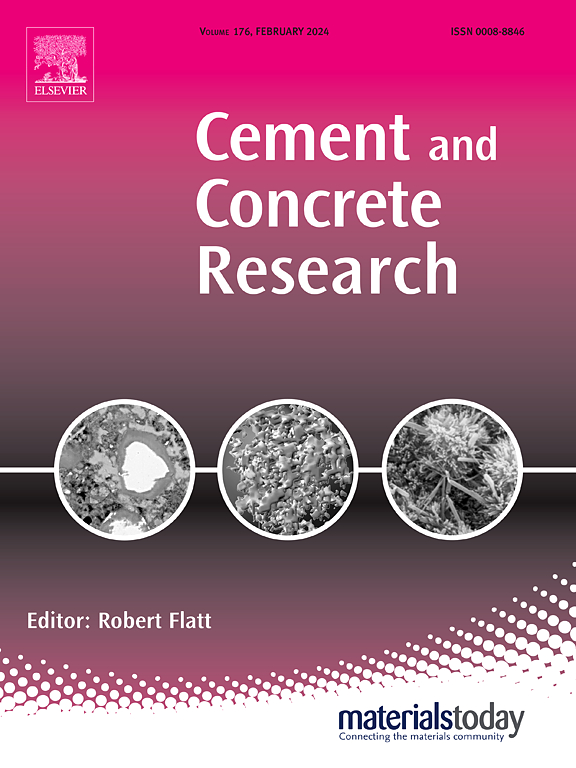Accelerated carbonation fronts in cement pastes: Mechanistic insights and simplified modeling
IF 13.1
1区 工程技术
Q1 CONSTRUCTION & BUILDING TECHNOLOGY
引用次数: 0
Abstract
This study investigated the carbonation behavior of ordinary Portland cement (OPC), volcanic glass powder (VGP), and limestone-calcined clay cement (LC3) pastes, focusing on the water content distribution, phase assemblages, and microstructural evolution. Spatiotemporal changes in water and mineral phases were tracked using proton nuclear magnetic resonance relaxometry and micro-X-ray diffraction, respectively. A simplified model reproduced the drying front, defined by a material-specific threshold water content, which aligned closely with the experimentally measured carbonation front. This confirmed that carbonation progression is governed by water diffusion, referred to as the “plugging effect”. Furthermore, carbonation advanced until empty space increased to approximately 18 %, resulting from the decalcification-induced agglomeration of calcium (alumino) silicate hydrate (C–(A)–S–H). This limit was consistently observed across pastes with varying Ca/(Si + Al) ratios. These findings provide mechanistic insight into carbonation front development and offer a physically grounded criterion for predicting carbonation depth and assessing CO₂ uptake in sustainable cementitious materials.水泥浆体中的加速碳化前沿:力学见解和简化建模
本研究研究了普通硅酸盐水泥(OPC)、火山玻璃粉(VGP)和石灰石煅烧粘土水泥(LC3)的碳化行为,重点研究了其含水量分布、相组合和微观结构演变。利用质子核磁共振弛豫仪和微x射线衍射分别跟踪了水相和矿物相的时空变化。一个简化的模型再现了干燥锋,由特定材料的阈值含水量定义,这与实验测量的碳化锋密切相关。这证实了碳酸化过程是由水扩散控制的,称为“堵塞效应”。此外,由于脱钙引起的水合硅酸钙(铝)团聚(C - (A) - s - h),碳化作用继续推进,直到真空空间增加到约18%。这一极限在不同Ca/(Si + Al)比例的膏体中一致观察到。这些发现为碳酸化前沿的发展提供了机理见解,并为预测碳酸化深度和评估可持续胶凝材料的CO 2吸收提供了物理基础标准。
本文章由计算机程序翻译,如有差异,请以英文原文为准。
求助全文
约1分钟内获得全文
求助全文
来源期刊

Cement and Concrete Research
工程技术-材料科学:综合
CiteScore
20.90
自引率
12.30%
发文量
318
审稿时长
53 days
期刊介绍:
Cement and Concrete Research is dedicated to publishing top-notch research on the materials science and engineering of cement, cement composites, mortars, concrete, and related materials incorporating cement or other mineral binders. The journal prioritizes reporting significant findings in research on the properties and performance of cementitious materials. It also covers novel experimental techniques, the latest analytical and modeling methods, examination and diagnosis of actual cement and concrete structures, and the exploration of potential improvements in materials.
 求助内容:
求助内容: 应助结果提醒方式:
应助结果提醒方式:


